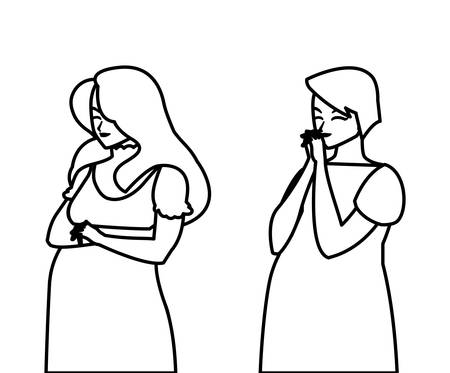Introduction to Baby Sign Language
Baby sign language is a way for infants and toddlers to communicate before they can speak. It involves using simple hand gestures or signs to represent words, helping babies express their needs, thoughts, and emotions. This method has gained popularity among parents and caregivers because it reduces frustration, strengthens bonding, and supports early language development.
What Is Baby Sign Language?
Baby sign language is not the same as American Sign Language (ASL), but it borrows basic signs from ASL or other established sign languages. These simplified gestures are easy for babies to learn and use. Common signs include “milk,” “more,” “eat,” and “all done.” Parents typically start introducing signs around six months of age when babies begin to develop motor skills and show interest in communication.
Benefits of Baby Sign Language
Using baby sign language offers several advantages for both babies and parents:
| Benefit | Description |
|---|---|
| Reduces Frustration | Babies can express their needs without crying or tantrums. |
| Strengthens Parent-Child Bond | Encourages interaction and understanding between caregivers and infants. |
| Supports Early Language Development | Helps babies develop communication skills before they start speaking. |
| Boosts Cognitive Skills | Enhances memory, problem-solving, and early learning abilities. |
| Encourages Confidence | Makes babies feel understood and more willing to engage in conversations. |
Why Has Baby Sign Language Become Popular?
The increasing interest in baby sign language is due to its proven benefits and ease of implementation. Many parents find that teaching their baby a few simple signs can greatly improve daily interactions. Pediatricians and child development experts also support its use as a tool for fostering early communication skills. With more resources available online, including videos, books, and classes, learning baby sign language has never been easier.
Common Myths About Baby Sign Language
Despite its growing popularity, some parents worry that signing might delay speech development. However, research shows that baby sign language actually encourages verbal communication by reinforcing word associations. Babies who sign often transition smoothly into spoken language because they already understand the concept of communication.
Final Thoughts on Getting Started
If youre considering introducing baby sign language, start with a few basic signs that relate to your babys daily routine. Consistency and repetition are key—use the signs regularly while speaking the corresponding words aloud. Over time, your baby will begin to recognize and use them to communicate more effectively!
2. When and How to Start Teaching Signs
Introducing sign language to your baby can be a game-changer in early communication. But when should you start, and how can you make it part of your daily routine? Lets break it down into simple steps.
When to Start Signing with Your Baby
The ideal age to start teaching baby signs is around 6 months old, though some parents begin as early as 4 months. At this stage, babies are developing their motor skills and beginning to recognize patterns in communication. If your baby is older, dont worry—its never too late to introduce signing!
Signs of Readiness
Every baby develops at their own pace, but here are a few signs that your little one might be ready for signing:
- Increased eye contact and attention to gestures
- Interest in hand movements and mimicking actions
- Babbles and responds to sounds or words
How to Start Teaching Baby Signs
The key to success is consistency and repetition. Here are some practical tips to help you incorporate signing into your daily routine:
Start with Basic Signs
Begin with simple, commonly used words that your baby encounters every day. Some great starter signs include:
| Word | Sign Description |
|---|---|
| Milk | Open and close your hand like youre squeezing a cows udder. |
| More | Touch the fingertips of both hands together repeatedly. |
| Eat | Tap your fingers to your mouth as if bringing food to it. |
| Mama/Dada | Tapping your thumb on your chin (Mama) or forehead (Dada). |
Use Signs During Daily Activities
The best way to reinforce learning is by using signs naturally throughout the day:
- During meals: Sign “eat” before feeding your baby.
- Nursing or bottle-feeding: Use the “milk” sign consistently.
- Playtime: Introduce fun signs like “more” when playing with toys.
- Saying goodnight: Use “sleep” before putting them down for bedtime.
Add Facial Expressions and Verbal Cues
Your baby learns through observation, so always pair signs with spoken words and facial expressions. This helps them connect the meaning more easily.
Praise and Encourage Attempts
If your baby tries to imitate a sign, celebrate it! Even if its not perfect, positive reinforcement will encourage them to keep trying.
A Fun and Rewarding Journey
Treat signing as an interactive experience rather than a lesson. Keep it fun, be patient, and enjoy the process of bonding with your baby through this amazing tool!

3. Essential Signs to Get Started
Introducing sign language to your baby can be an exciting and rewarding experience. To help you get started, here are some of the most common first signs that are easy for babies to learn and useful for everyday communication.
Common First Signs
These basic signs cover essential needs and emotions, making it easier for your baby to express themselves before they can speak.
| Sign | Meaning | Description |
|---|---|---|
| Milk | I want milk | Open and close your hand like you’re squeezing a cow’s udder. |
| More | I want more | Bring your fingertips together on both hands and tap them together. |
| All Done | I’m finished | Hold both hands up, palms facing out, and rotate them back and forth. |
| Eat | I’m hungry | Tap your fingertips together and bring them to your mouth. |
| Please | Manners/Politeness | Rub your palm in a circular motion on your chest. |
| Thank You | A way to show gratitude | Touch your fingers to your chin and move your hand outward. |
Tips for Teaching Baby Sign Language
- Start with a few signs: Introduce just one or two at a time so your baby doesn’t feel overwhelmed.
- Say the word while signing: Always say the word aloud as you make the sign to reinforce learning.
- Be consistent: Use the same signs regularly so your baby can recognize them.
- Praise and encourage: Celebrate when your baby attempts to use a sign, even if it’s not perfect!
- Add new signs gradually: Once your baby masters a few signs, introduce more based on their interests and needs.
The Benefits of Learning These Signs Early
Your baby will be able to express their needs more clearly, reducing frustration and strengthening the bond between you. Simple signs like “milk” or “more” can significantly ease communication during mealtime, while “all done” helps signal when they’re finished eating or playing. With patience and consistency, these early signs pave the way for smoother interactions and happier moments together.
4. The Benefits of Signing Before Speech
Teaching your baby sign language before they can speak has numerous advantages. It helps reduce frustration, strengthens bonding between parents and babies, and supports early language development—all without delaying speech.
Reducing Frustration
Babies often know what they want but lack the words to express themselves. This can lead to crying, tantrums, and frustration for both parents and children. Teaching simple signs like “milk,” “more,” or “all done” allows babies to communicate their needs more effectively.
Strengthening Parent-Child Bonding
When you engage with your baby through sign language, you are creating meaningful interactions. Eye contact, facial expressions, and responsive communication help build trust and emotional connections. Signing also encourages parents to be more attentive to their babys nonverbal cues.
Supporting Language Development
Many parents worry that teaching sign language might delay speech, but research suggests otherwise. Babies who learn signs tend to develop spoken language skills earlier because signing reinforces the concept of communication. It helps them understand the connection between words and meanings while building confidence in expressing themselves.
Common Baby Signs and Their Meanings
If youre new to baby sign language, here are some commonly used signs that can help improve communication:
| Sign | Meaning | Description |
|---|---|---|
| Milk | I want milk | Open and close your fist as if youre squeezing a cows udder. |
| More | I want more of something | Tap your fingertips together repeatedly. |
| All Done | I’m finished | Turn your hands outward in a flipping motion. |
| Eat | I’m hungry | Tap your fingers to your lips as if bringing food to your mouth. |
| Please | A polite way to ask for something | Circular motion of one hand on the chest. |
| Thank You | A polite way to show gratitude | Bend fingers slightly, bring fingertips from chin outward. |
The Best Time to Start Signing with Your Baby
You can start introducing signs as early as 6 months old when babies begin developing motor skills. Some babies may take time to respond, but consistency is key. Repeating the same signs daily while speaking the corresponding words helps reinforce understanding.
Tips for Success:
- Start with a few basic signs: Focus on essential words like “milk,” “more,” and “all done.”
- Say the word while signing: Always pair the spoken word with the sign so your baby connects both forms of communication.
- Be patient: It may take weeks before your baby starts using signs regularly.
- Praise efforts: Encourage any attempts at signing by responding positively.
- Makes it fun: Use songs and games that incorporate signing to keep it engaging.
The journey of teaching your baby sign language is rewarding. By reducing frustration, strengthening bonding, and supporting early language development, signing sets the foundation for effective communication even before speech begins.
5. Integrating Sign Language into Everyday Life
Incorporating baby sign language into daily routines can make communication more natural and effective. By using signs consistently during meals, playtime, and bedtime, you help reinforce learning in a fun and engaging way.
Signing During Meals
Mealtimes are a great opportunity to introduce signs related to food, hunger, and preferences. Using signs while feeding your baby helps them express their needs before they can speak.
| Sign | Meaning | How to Use It |
|---|---|---|
| More | Requesting more food | Tap your fingertips together when offering another bite. |
| All Done | Finished eating | Turn both hands outward to signal the end of a meal. |
| Milk | Asking for milk | Open and close your hand like you’re squeezing a bottle. |
| Eat | Hungry or wanting food | Tap your fingers to your lips when offering food. |
Using Signs During Playtime
Playtime is an exciting moment to introduce action-based signs. Babies learn best when they associate words with movement and emotions.
| Sign | Meaning | How to Use It |
|---|---|---|
| Play | Time for fun activities | Shake both hands with thumbs and pinkies extended. |
| Ball | Referring to a ball toy | Cup your hands together as if holding an invisible ball. |
| Doll/Teddy Bear | A favorite stuffed toy | Pretend to hug a doll or teddy bear while signing. |
| Book | Reading time request | Open and close your hands like a book. |
Signing at Bedtime
The bedtime routine is the perfect time to use calming signs that help babies transition from play to sleep. Signing during this period can create a peaceful atmosphere.
| Sign | Meaning | How to Use It |
|---|---|---|
| Sleep/Bedtime | Telling baby it’s time to sleep | Place one hand on the side of your face and tilt your head slightly. |
| Tired | Feeling sleepy or exhausted | Sweep both hands down from your chest, showing fatigue. |
| Bath | Telling baby it’s bath time | Pretend to rub soap on your chest with both fists. |
| I Love You | A loving gesture before bed | Create an “I love you” hand sign by extending the thumb, index finger, and pinky while keeping the middle and ring fingers folded down. |
Consistency Is Key!
The key to successful baby signing is consistency. Use these signs regularly during daily activities so that your baby can naturally pick them up over time. Be patient and encouraging—every little sign they learn brings them closer to better communication!


